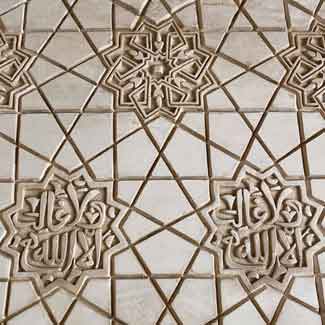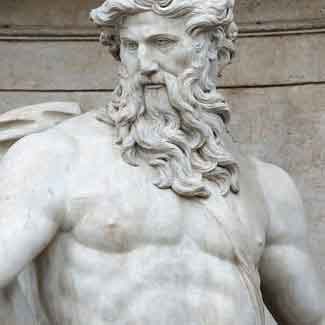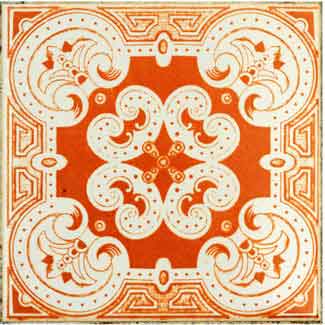Creel, Bryant L.

Bryant L. Creel
A native of California (b. Berkeley 1944), Dr. Bryant Creel grew up in Sacramento, where his father was an English professor. At 16 he lived for 9 months in Mexico City as an exchange student and at 17-18 lived in Salamanca, Spain, where his father taught at the university and he taught English language at the Colegio Maristas. He earned a B.A. in English from Stanford University in 1965 and an M.A. in Spanish in 1968. He taught English at York College of the City University of New York from 1968 to 1970.
After receiving his Ph.D. in Spanish in 1978, he worked at California State University at Long Beach (1979-84, teaching Spanish language and literature, including Advanced Grammar and graduate seminars in Don Quijote and Medieval Literature). He then taught Spanish language and literature at Louisiana State University (1985-89: all undergraduate levels and Golden Age Poetry on the graduate level), Providence College (1989-90), and Harvard University (1990-91).
From 1991-2012 he taught at the University of Tennessee, Knoxville, all undergraduate levels and graduate courses in Golden Age Poetry, Golden Age Drama, Golden Age Prose Fiction, and Don Quijote. While at UT Dr. Creel founded the UT summer program in Alicante, Spain and held the position of Series Editor and Director of the monographic series Albatros-Hispanófila Siglo XXI (Albatros Ediciones) pubished in Valencia, Spain. In 1980 he participated in an NEH Summer Seminar in Berkeley on “Renaissance Self-Fashioning” with Stephen Greenblatt. In 1977-78 and in 1985 he conducted research in Portugal and Spain with fellowships from the Calouste Gulbenkian Foundation in Lisbon. He chose not to apply for research grants later in his career because he considered the travel and use of funding required by such grants to be too much of a distraction from the time and thought demanded by innovative scholarship.
Publications
BOOKS
Dr. Creel’s single most innovative contributions as a critic of Spanish Golden Age literature have been in:
a) discovering that in Spain Renaissance humanist authors of imaginative prose and verse found the means to affirm heterodox, Reform spirituality in a way that eluded a theology-based censorship. Tragic love lyric and elegiac pastoral romance advanced (in combination with an emphasis on heroic character values and with a mournful, pseudo-ascetic tone) the idea and sentiment that the act of personal love, having a value that is independent of its object, is the highest good. In that way this literature translated into tacit, secular terms and implicitly celebrated the Catholic Reformist affective piety of Omnipotent Grace (persecuted as the doctrine that the “almighty love” of Christ’s Passion – independently of works/merit – effects the remission of all human sins).
b) applying in that endeavor the phenomenological ethics of values, analytic phychology, and a semiotic reading of literary culture in relation to the social and religious crises of the period.
Those advances are especially evident in:
- The Voice of the Phoenix: Metaphors of Death and Rebirth in Classics of the Iberian Renaissance (Tempe, AZ: Arizona Center for Medieval and Renaissance Studies, 2004).
This book addresses a broad selection of Spanish and Portuguese literary works of the period) but they, together with other important innovations, are also present in Don Quijote, Symbol of a Culture in Crisis (Valencia: Albatros-Hispanófila, 1988) (a study of the complex character Don Quijote in relation to the crisis of aristocratic culture) - The Religious Poetry of Jorge de Montemayor (London: Tamesis, l98l) (a theological analysis of the religious poetry of the foremost lay Spanish/Portuguese Renaissance author of religious poetry and the reasons for its censorship by the Inquisition).
ARTICLES, ESSAYS, AND TRANSLATIONS
- “On the Dilemmas of Decoding Hyperbaton in Góongora” in El sol de los talleres: Estudios en homenaje a Stanslav Zimic. Ed. María Ángeles Fernández Cifuentes. Newark, Delaware: Juan de la Cuesta, 2014, 27-38.
- “Garcilaso de la Vega (1499-1503 — 13-14 October 1536)” in Dictionary of Literary Biography. Detroit, Mich.: Gale Research Co., c2006, 318: 62-82.
- “Palace of the Apes: The Ducal Chateau and Cervantes’s Repudiation of Satiric Malice” in Cervantes y su mundo, Vol. 3, Ed. A. Robert Lauer and Kurt Reichenberger. Kassel: Reichenberger, 2005, 81-101. Also published in Don Quijote across Four Centuries: 1605-2005. Ed Carroll B. Johnson. Newark, Delaware: Juan de la Cuesta, 2006, 87-105. Also published in Bloom’s Modern Critical Interpretations: Miguel de Cervantes’s “Don Quixote” – New Edition. Ed. Harold Bloom. New York, N.Y.: Infobase Publishing, 2010, 109-125.
- “Parodias de lobreguez pesimista en algunas obras del Renacimiento peninsular” in Dejar hablar a los textos: Homenaje a Francisco Márquez Villanueva. Ed. Pedro M. Piñero Ramírez. 2 Vols. Sevilla: Facultad de Filología de la Universidad de Sevilla, 2005. Vol. II, 297-312.
- “Amor ambivalente e individuación: El Soneto II de Fray Luis frente a Fairbairn y Jung,” Actas del V Congreso de la Asociación Internacional Siglo de Oro (Münster, 1999), ed. Christoph Strosetzki (Madrid: Iberoamericana, 2001), 381-87.
- “Garcilaso y el mito de la sumisión al amor-hado en la tradición cancioneril,”
Actas del XIII Congreso de la Asociación Internacional de Hispanistas, 1998, ed. Florencio Sevilla and Carlos Alvar (Madrid: Castalia, 2000), 309-317. - “Bernardim Ribeiro,” Scribner’s Encyclopedia of the Renaissance (New York: Charles Scribner’s Sons, 1999), Vol 5, 340-41.
- “Garcilaso’s Sonnet XXII: A Re-examination in the Light of Phenomenological Ethics of Values,” Calíope, Vol 3.1 (1997), 51-70.
- “Canción I y Soneto II de Garcilaso y el problema del masoquismo en la lírica amatoria renacentista,” Studia Aurea: Actas del III Congreso de la Asociación Internacional Siglo de Oro (Toulouse, 1993) (Toulouse-Pamplona: GRISO-LEMSO, 1996), Vol. I, 299-307.
- “Jorge de Sena y el hispanismo de visión amplia,” Anthropos (Barcelona), No. 150, November 1993, 59-62.
- “Theoretical Implications in Don Quijote’s Idea of Enchantment,” Cervantes, Spring, 1992 (Vol. 12, No. 1), 19-44.
- “Aesthetics of Change in a Renaissance Pastoral: New Ideals of Moral Culture in Montemayor’s Diana,” Hispanófila, May 1990 (No. 99), 1-27.”Love’s Protest Against Sovereignty: Anguish and Reproach in Fray Luis de León’s ‘En la Ascensión’ and in Garcilaso,” Journal of Hispanic Philology, Fall, l987[88] (Vol. l2, No. l), 37-50.”Bernardim Ribeiro and the Tradition of Renaissance Pastoral,” in Renaissance and Golden Age Essays in Honor of D. W. McPheeters, ed. Bruno Damiani (Potomac, MD: Scripta Humanistica, l989), pp. 27-48; also published in Encruzilhadas/Crossroads, 1990 (Vol. 3), 46-57.
- The Horns of Don Friolera by Ramón del Valle-Inclán, Trans. Bryant L. Creel, Modern International Drama, Spring, l987 (Vol. 20, No. 2), 29-68.
- “Reformist Dialectics and Poetic Adaptations of Psalm l37, ‘Super flumina Babylonis,’ in Portugal in the l6th Century,” in Camoniana California (Santa Barbara: Jorge de Sena Center for Portuguese Studies, l985), 85-92.
- “Humanism and the Petrarchan Mode in Montemayor’s Diana” (Editora Nacional, accepted for publication, the publishing house subsequently closed).
Phone: 865-719-2520
Email: bcreel@utk.edu
Education
1960 (summer) – Universidad Autónoma de Mexico, Mexico City
1961-62 – Universidad de Salamanca, Spain
1962-63 – California State University in Sacramento, Sacramento, CA
1963-65 – Stanford University, Stanford, CA
B.A. l965 – Stanford University
Major: English; Minor: Spanish
1965-1967 – Universidad Complutense de Madrid (with the California State University International Program)
M.A. l968 – California State University, Sacramento, CA
Field: Spanish Literature
Thesis Director: Mary Giles
Ph.D. l978 – University of California, Davis, CA
Field: Spanish Literature
Thesis Director: Antonio Sánchez-Romeralo











